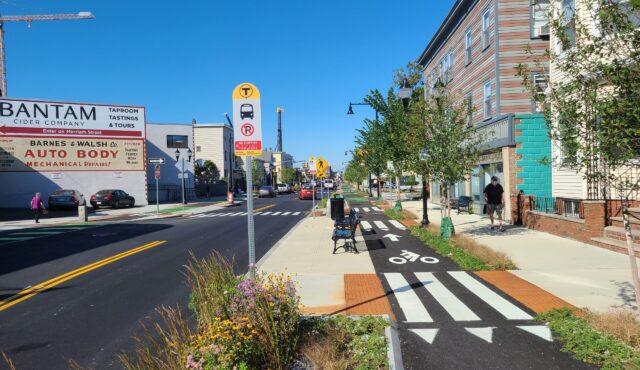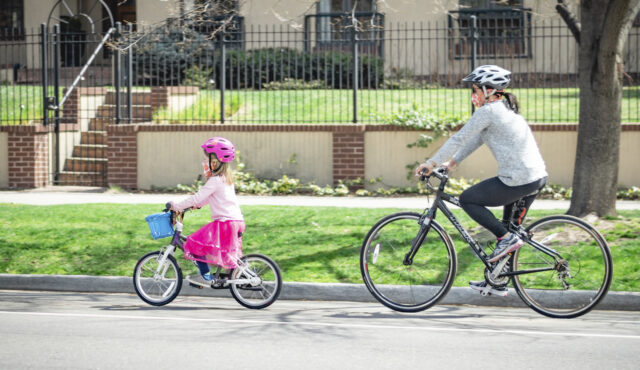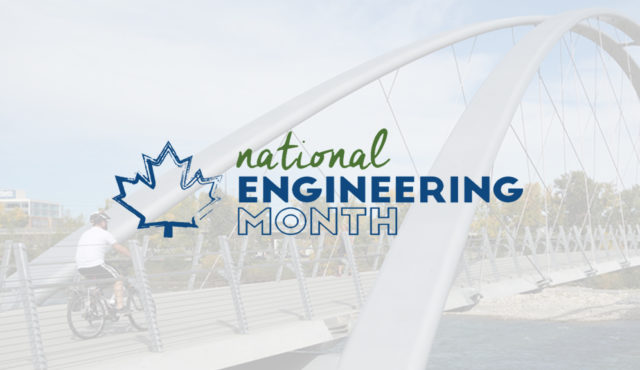We have celebrated 20 years of Toole Design this year by taking on the topics that will define our industry over the next 20 years. We hope to spark collective action to create safer, healthier, more just communities. In previous articles in this series, we took on the complex topics of gentrification and displacement and climate change. Here we cover our final topic: the future of public transit.
In 2043, if you mention transit-oriented development in a meeting, no one will know what you’re talking about. Our industry will have retired that phrase, because all development will be transit-oriented.
Is that an overly optimistic vision? You would certainly think so given the number of pronouncements on the “death spiral” of public transit systems across North America. Transit agencies lost revenue as ridership plummeted during the peak years of the pandemic, urban sprawl continues to make it difficult for transit to serve increasingly far-flung commuters, and agencies struggle to recruit enough drivers to operate the scheduled services that remain.
Despite these challenges, a thriving transit culture in U.S. and Canadian cities is essential if we are to achieve the vision of a carbon-neutral transport sector, zero fatalities on our streets, and a transportation system that is more just.
So, how can we elevate the role of transit as an essential civic asset? Many of the strategies are surprisingly straightforward.
The success of transit depends on one thing: service that serves people. When it comes to transit there’s no substitute for good service. What does “good” look like for a public transportation system? Check out the scenarios below to envision how different the transit experience could be 20 years from now if we collectively take some simple (but not necessarily easy) steps to get there.
BUS STOPS THAT ARE YOUR HAPPY PLACE
At the present time, a North American “bus stop” can be anything from a partially enclosed shelter with seats, heat, and lighting, to a barely visible sign on the upslope of a roadside drainage ditch. To ride the bus, you often must walk out of your way to reach the nearest crosswalk or risk your life crossing in the middle of the block. Then you must wait in the sun, snow, or rain for your bus to arrive, maybe on a concrete pad or sidewalk, but often just standing in the grass or dirt on the side of a busy road.
In our vision for 2043, comfortable and convenient bus stops are the norm. That means:
- Shelter from the elements
- Seating, plus space for mobility devices
- Locations that are visible, accessible, comfortable, and convenient to riders
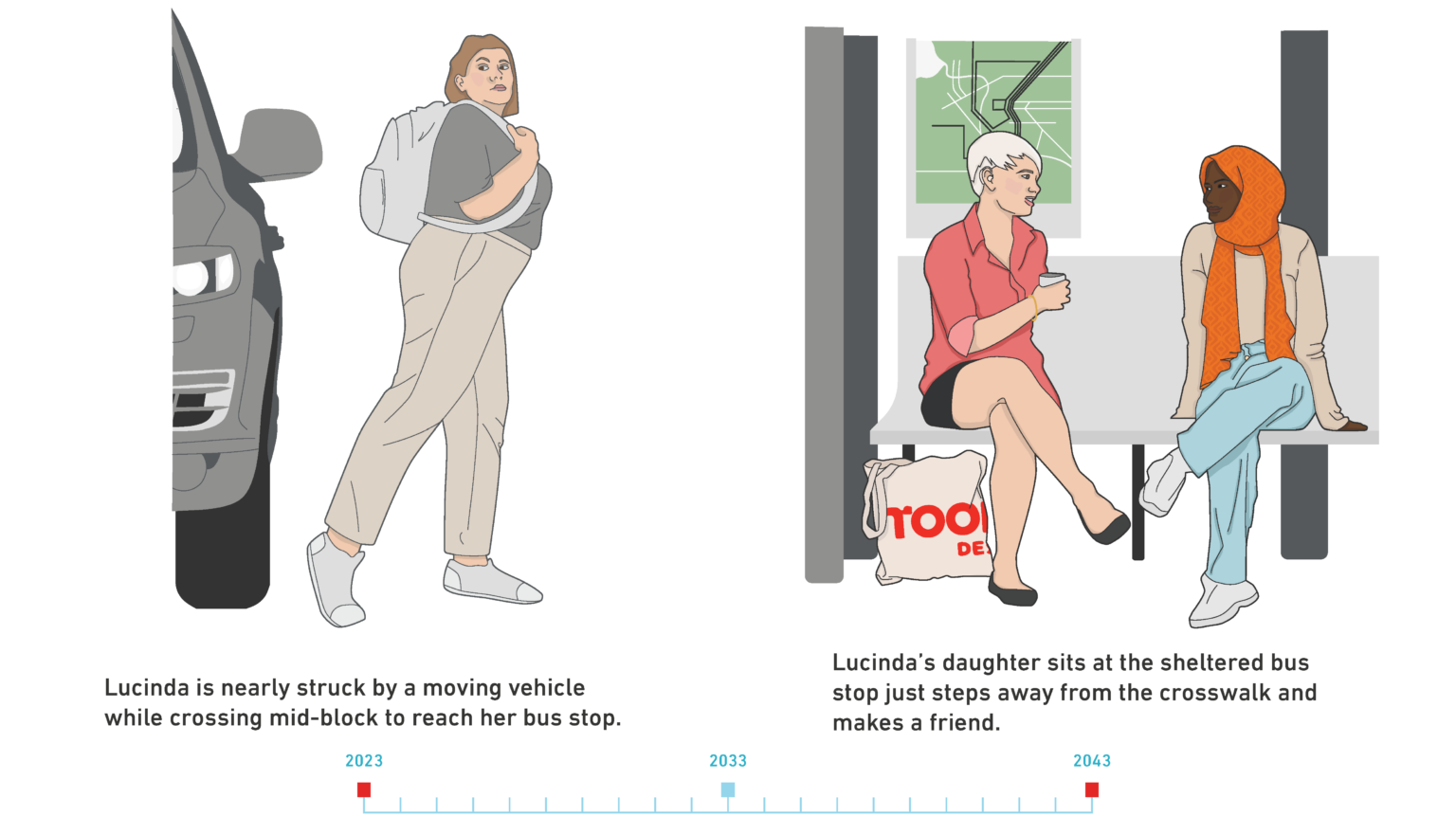
NETWORKS THAT COVER YOUR BASES
Right now, a handful of cities account for the lion’s share of public transit use in the United States and Canada. What is the difference between those cities and the rest of the country? Their transit networks are well-connected and extend throughout the metro area; transit service is frequent; and they offer comprehensive and interconnected systems of trains, buses, light rail, and scooter/bikeshare options for first and last mile trips. Outside these cities, public transit is not an attractive or viable option for many people — assuming they even have a choice – with patchy service and limited routes.
In 2043, we believe more people will routinely choose transit because it will be a fast, reliable way to get to where they want to go. This should include:
- Bus and train networks with extensive coverage and no missing links
- Shared micromobility networks that connect seamlessly with transit
- Strategic redundancy so you have a safety net if one mode fails
- Trip chaining that is practical and inclusive
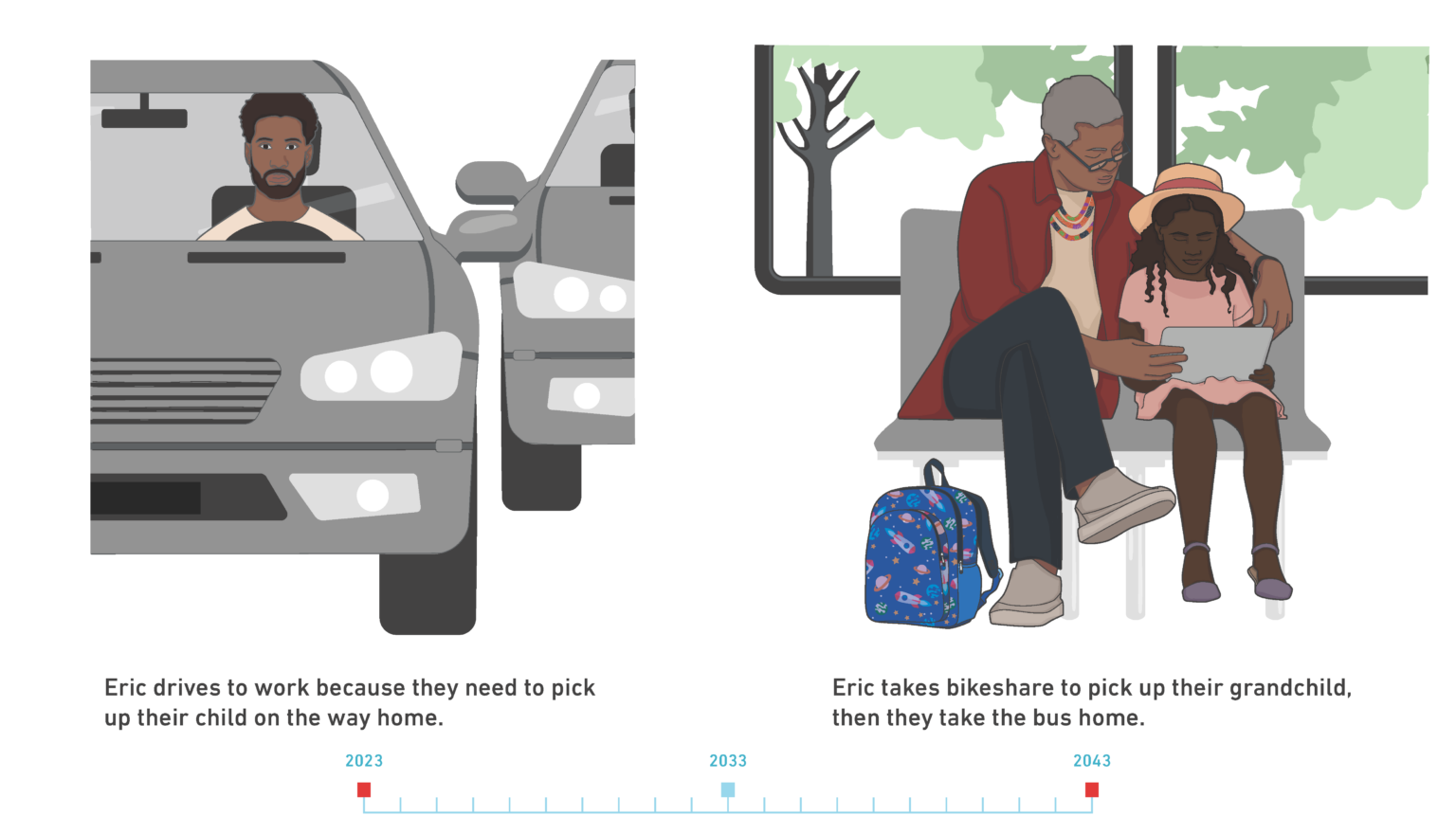
STREETS THAT SUPPORT YOUR MANY MODES
Currently, it’s not just the service gaps that make the public transit experience undesirable for many people — it’s also all the details in between. The walking conditions between home and the transit stop. The time it takes to commute by bus versus driving. The dearth of safe or comfortable options for the last mile. In other words, it is not just about the bus; it is about the whole street.
In our 2043 vision, full corridors (not just nodes or hubs) are designed for transit and micromobility. Imagine:
- Safe, comfortable bike lanes and paths
- Bus Rapid Transit lanes and transit signal priority
- Ample, accessible, shaded pedestrian space
- Density and access to goods and services along the route
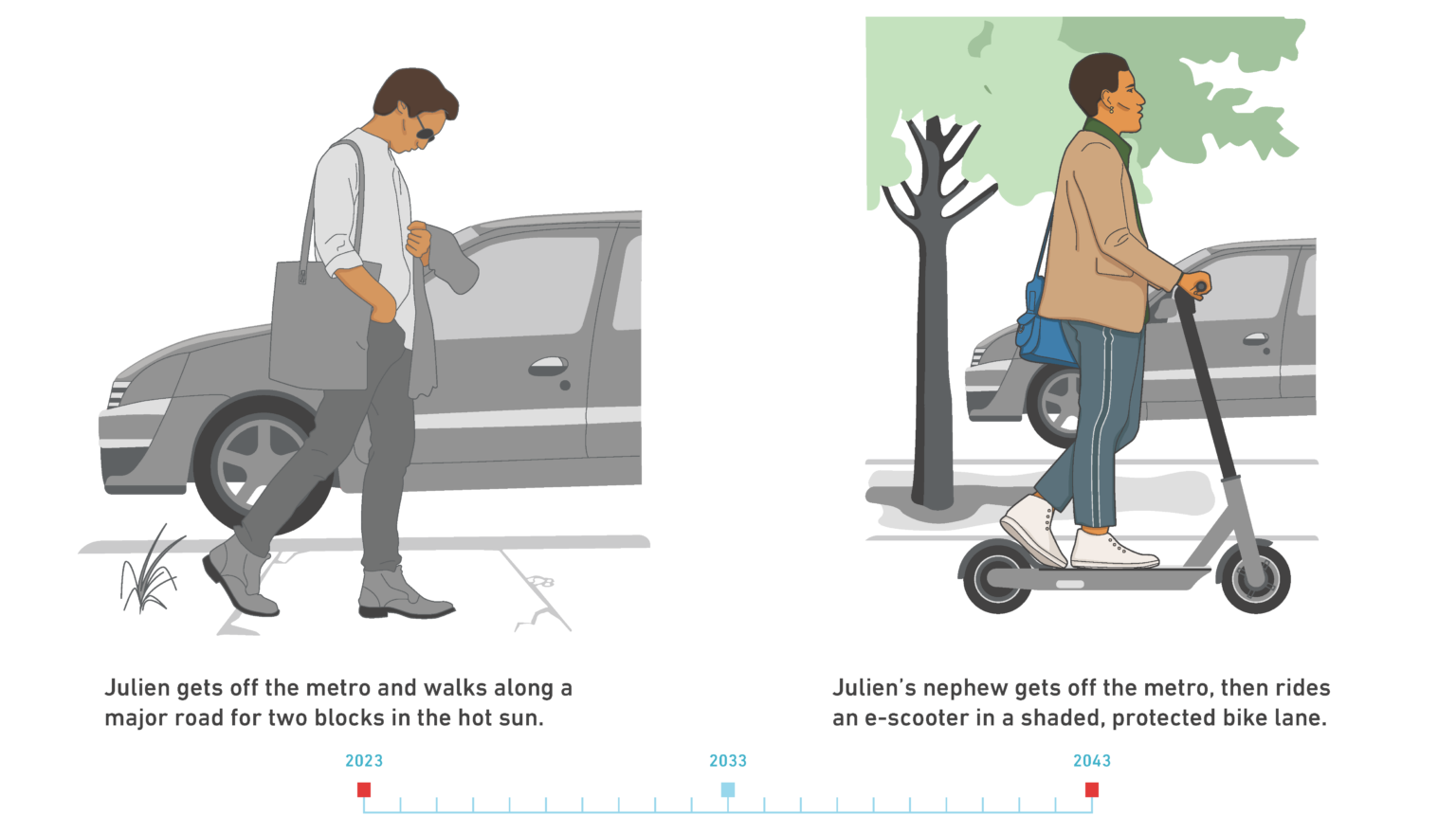
HOW DO WE GET THERE?
Our vision for 2043 sounds rosy. But it doesn’t need to be a pipe dream if we work together to make some large, purposeful shifts. The shifts will not be cheap, but they can be sustainable if executed wisely. And the payoff — vibrant cities and towns where transportation is a source of equity (not a barrier to it) — will be well worth the effort.
Here’s what needs to happen:
Cities and counties need to invest substantially in transit. We did it before, and we can do it again. Public transit and new mobility are an essential public service, not a nice-to-have or a welfare program. Transit needs to become our number one priority for investment in infrastructure. And it’s not enough to just call for more investment — we need to redirect the money we currently spend on new, wider, and faster roads toward more frequent transit service and better capital transit infrastructure instead.
We need to broaden our definition of transit to explicitly include shared micromobility (bike and scooter sharing systems) as well as the full range of alternatives to driving alone in a private car. We need to create a seamless, fully accessible public transportation system that operates on evenings and weekends and serves more than just 9-5 weekday trips.
Cities and transit agencies should join forces to take advantage of all the levers in their control to make transit safer, more efficient, and recognized as a genuine public asset. Decisions about signal timing (including pre-emption for transit vehicles), lane use, station and stop locations, bikeshare installation, parking availability and cost, and land use can all be made to prioritize transit and increase its competitiveness versus solo car travel. These decisions are largely under the control of cities today.
HOW WILL WE KNOW WE HAVE SUCCEEDED?
As with any grand vision, it is essential to identify the performance measures that will signal success. So how will you know when these transit dreams have come true?
When transit is always your quickest option for trips over 3 miles.
When you don’t need a schedule, because there’s frequent 24/7 service.
When you can easily transition from one mode to another.
When transit-oriented development is just… development.
